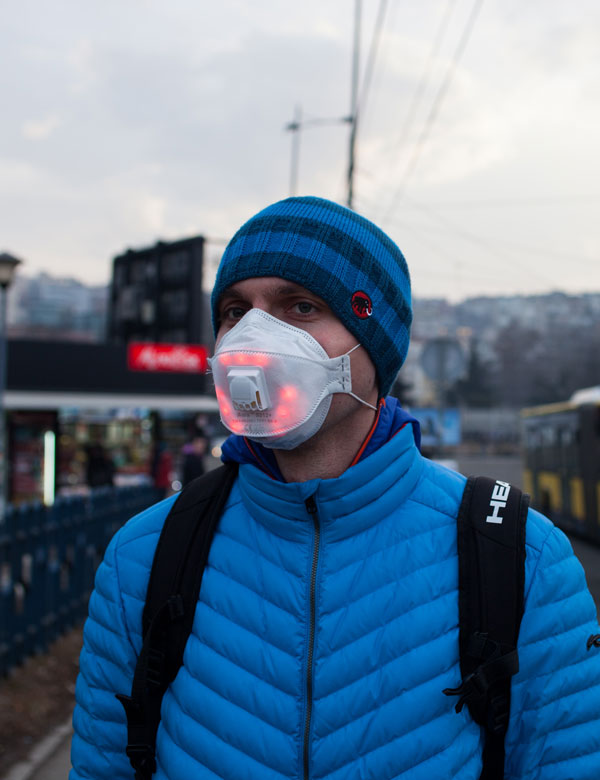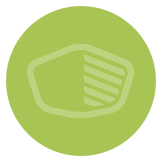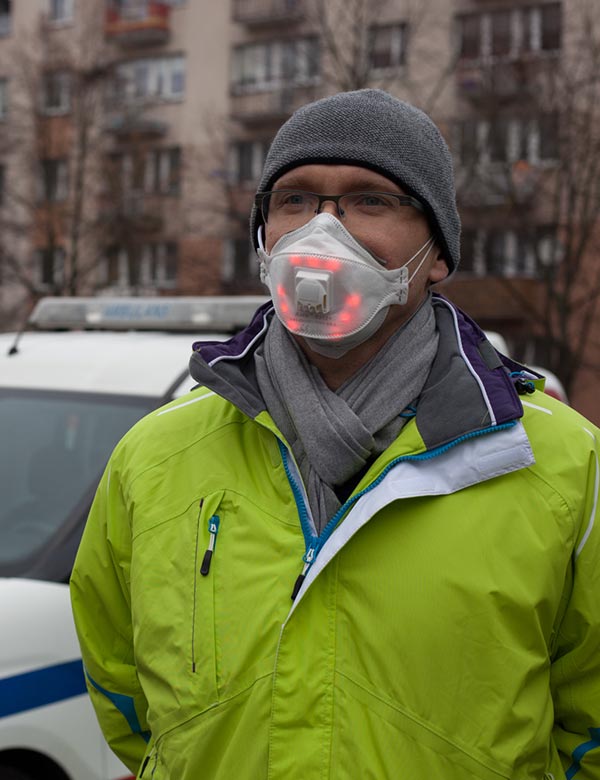When it comes to health and air pollution, masks are a common symbol.
However, masks are an ineffective solution to protecting public health from air pollution. People often wear surgical masks (like those worn by doctors) to protect themselves from polluted air, but these masks do not create a seal around the mouth and so allow dirty air to be breathed in from the sides. People who wear the more expensive and properly fitting N95 variety of mask (known as respirators) are better protected, however these masks make breathing more difficult and therefore may not be recommended for people with respiratory disease.
To highlight the personal risks posed by air pollution, Unmask My City has developed a special LED light mask that changes colour according to live air pollution measurements. Using an AirBeam air quality monitor and AirCasting software we can map PM2.5 particulate pollution, and show how good or bad the air is in real time as the data streams to our light mask.



What is PM 2.5?
PM2.5 is fine particulates less than 2.5 micrometers in diameter. Particulate matter (including soot) is emitted during the combustion of solid and liquid fossil fuels, such as for power generation, domestic heating and in vehicle engines; other industrial activities and dust also contribute to PM2.5. PM2.5 isn’t the only component of air pollution that is harmful, as most of the sources of PM2.5 also emit other air and climate pollutants. Exposure to such particulate pollution is linked to to an increased risk of respiratory and cardiovascular diseases such as asthma, chronic obstructive pulmonary disease, heart attacks and stroke. 1
What do the colours mean?

(0-12 µg/m33 )
Good quality air with little to no risk.

(12.1-35.4 µg/m3 )
Moderate risks for those unusually sensitive to air pollution

(35.5-55.4 µg/m3)
Unhealthy for sensitive groups

(55.5-150 µg/m3)
Unhealthy for everyone, with sensitive groups potentially facing serious health effects
For all colours outside of green, the Air Quality Index recommend active children, adults and vulnerable groups with respiratory diseases limit prolonged outdoor exertion.
The scale is based on AQICN.




